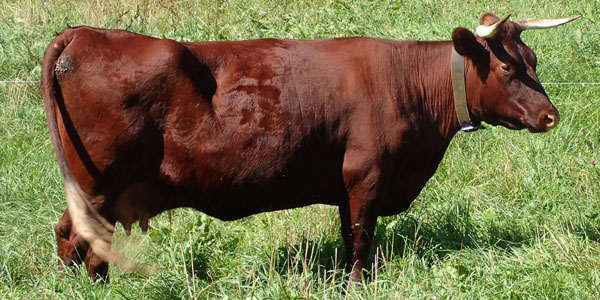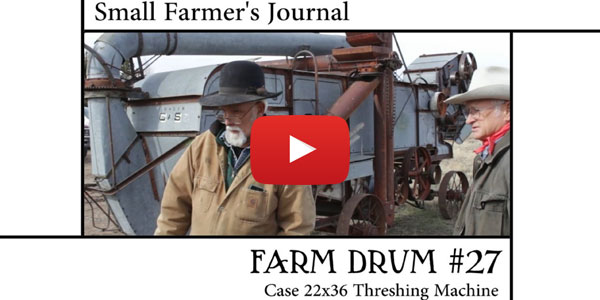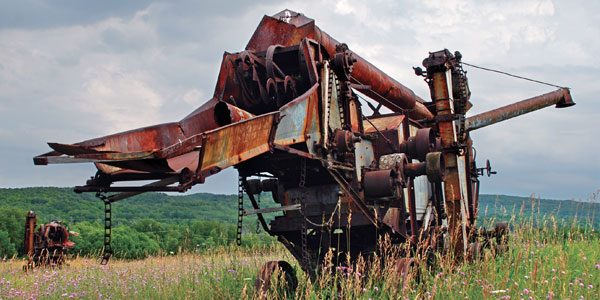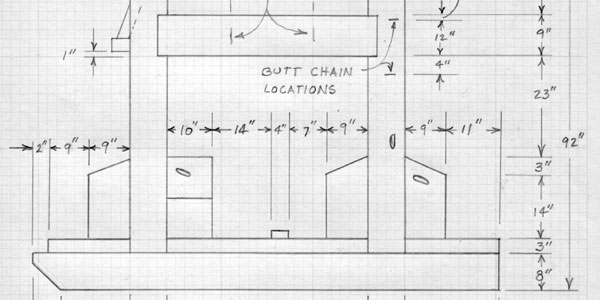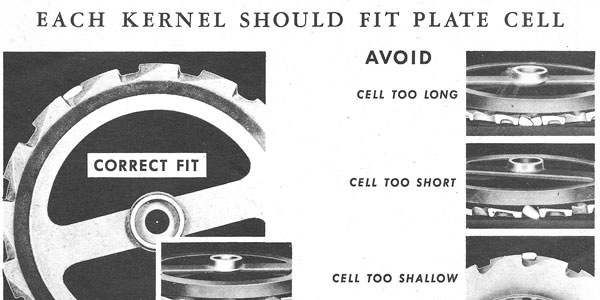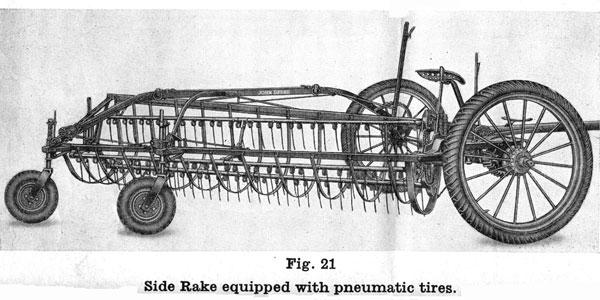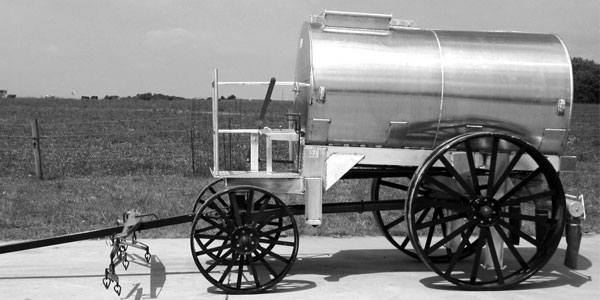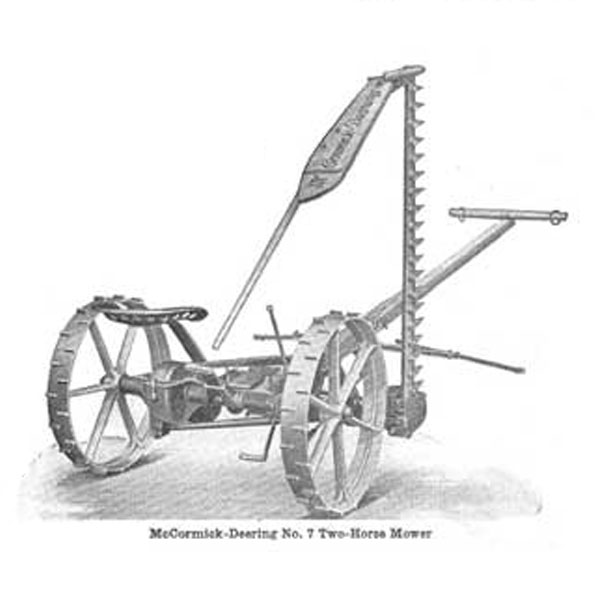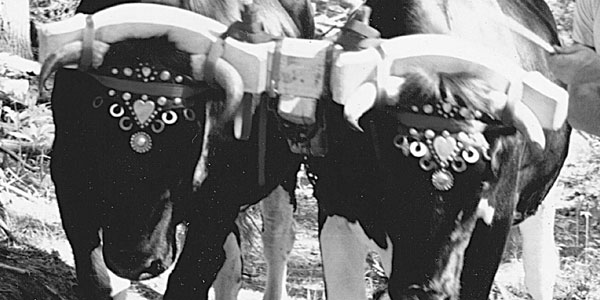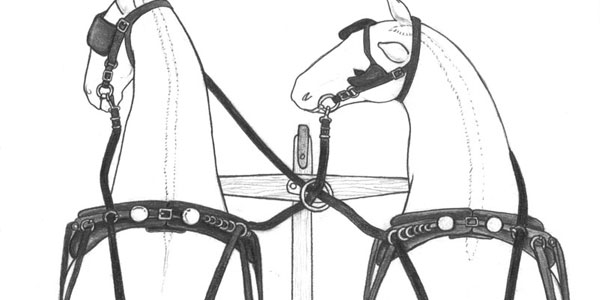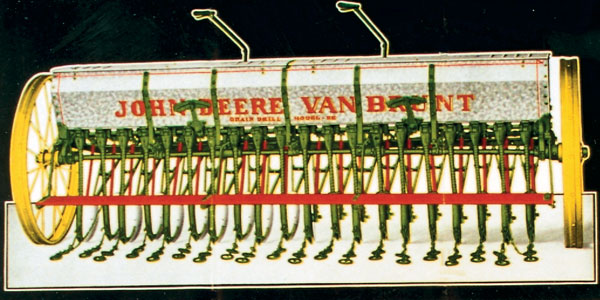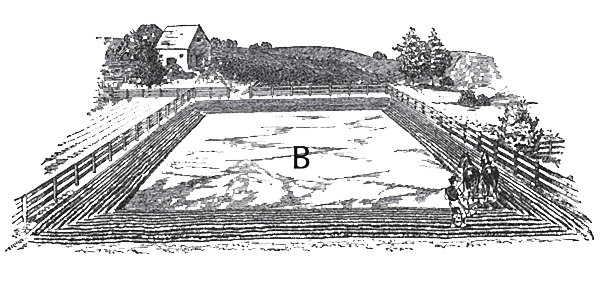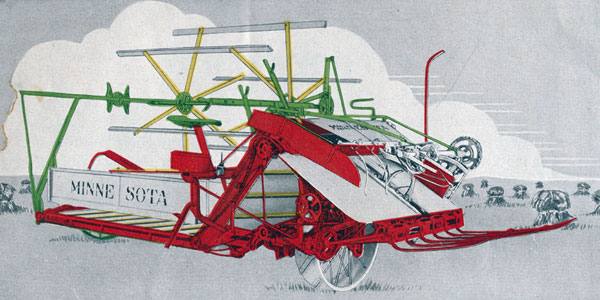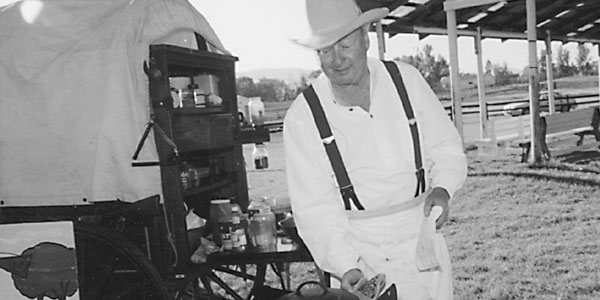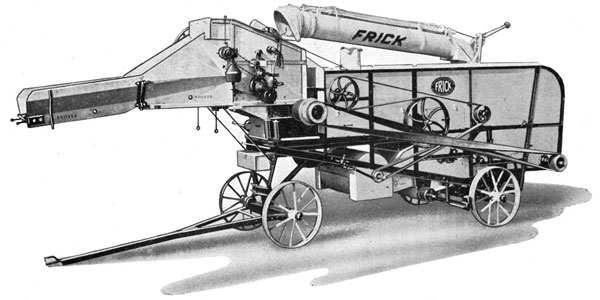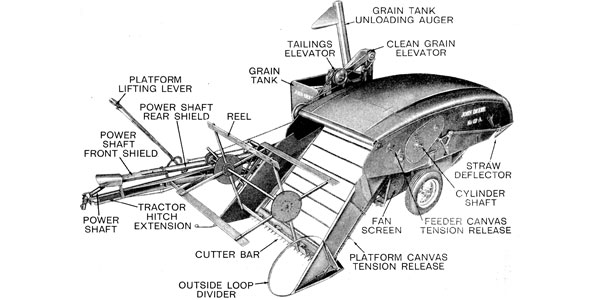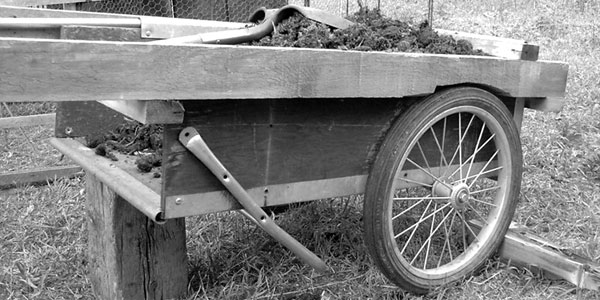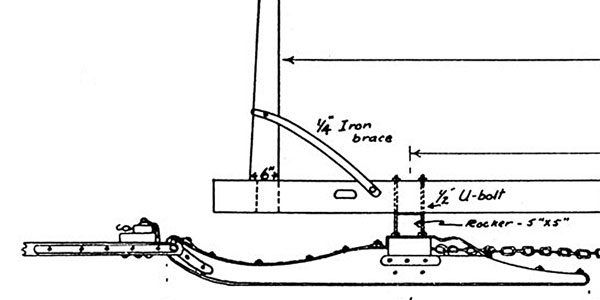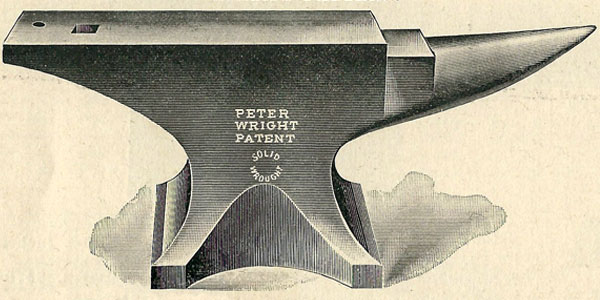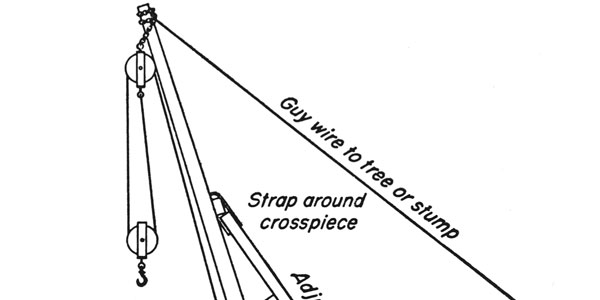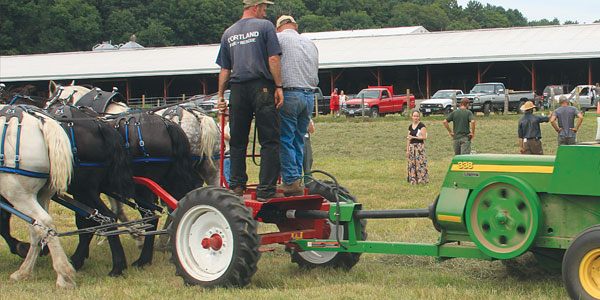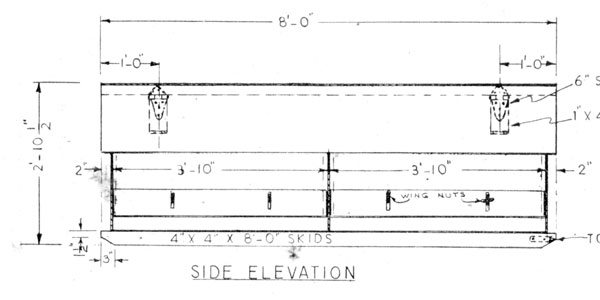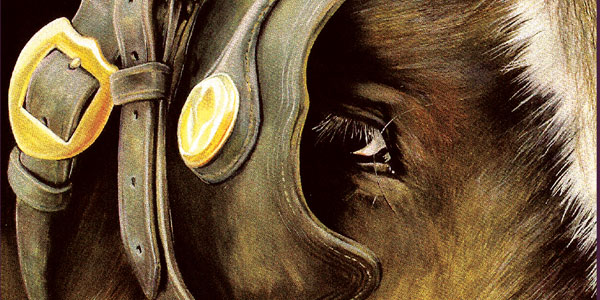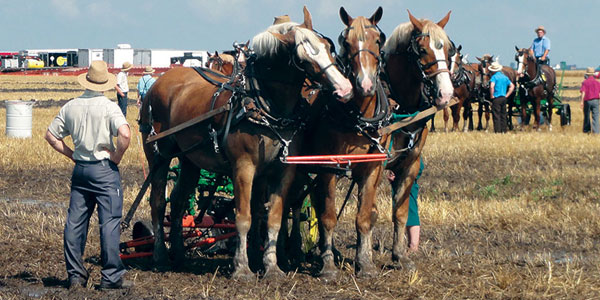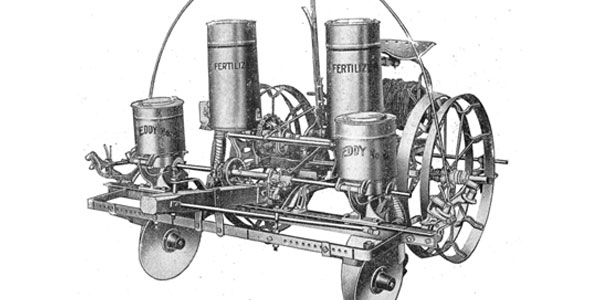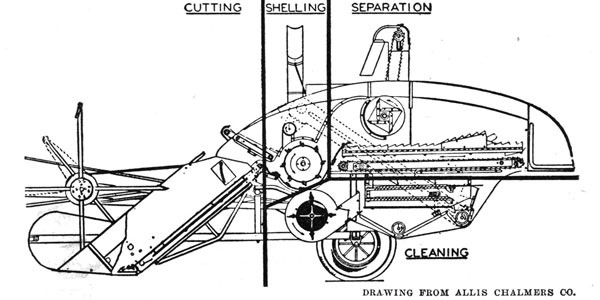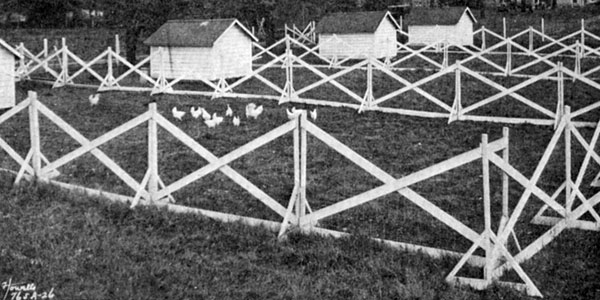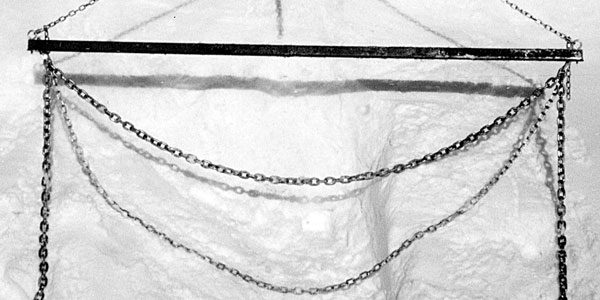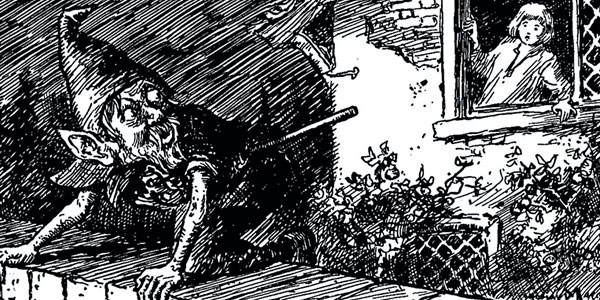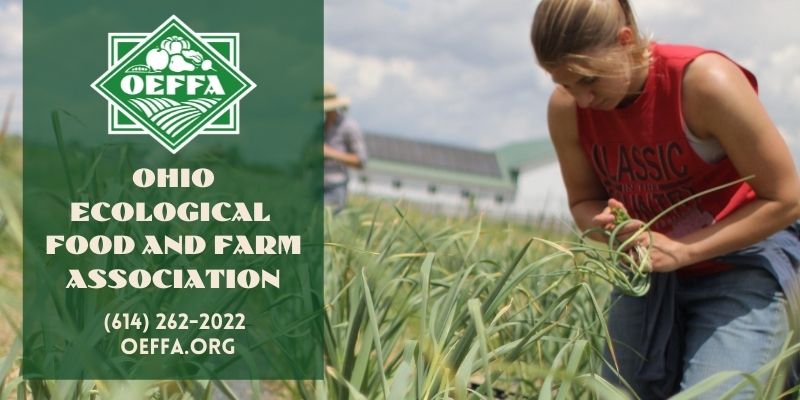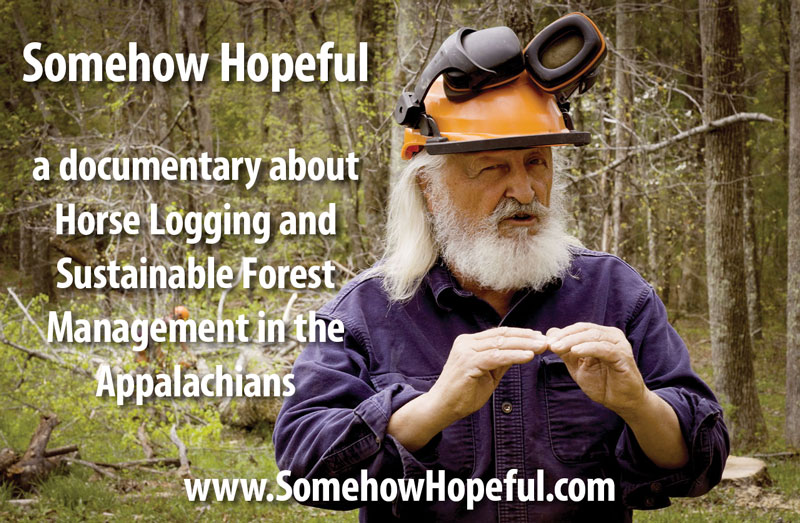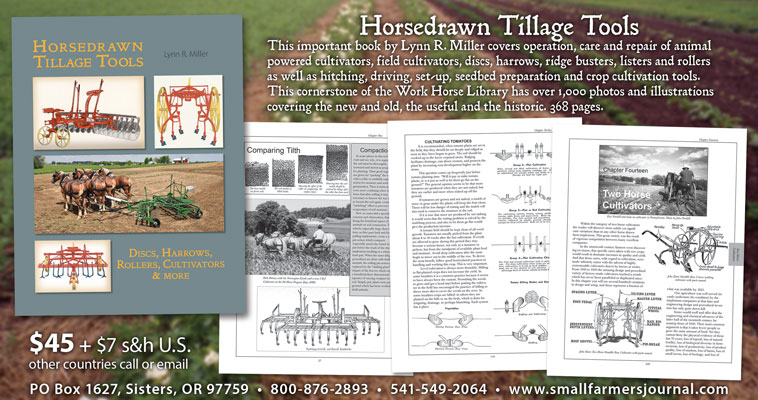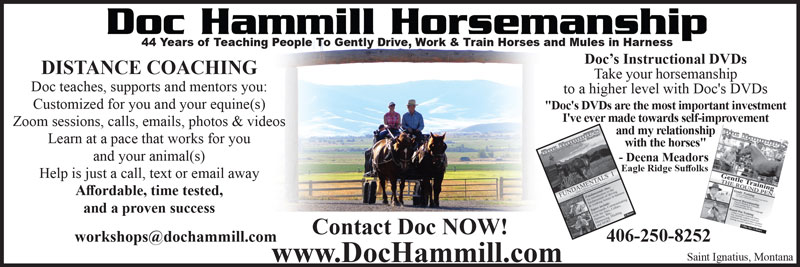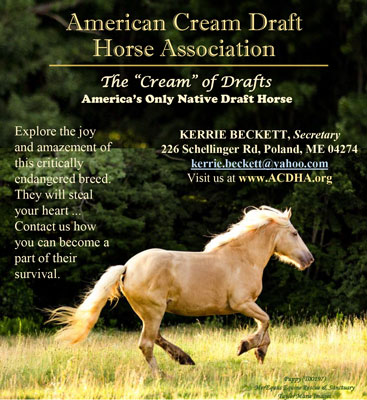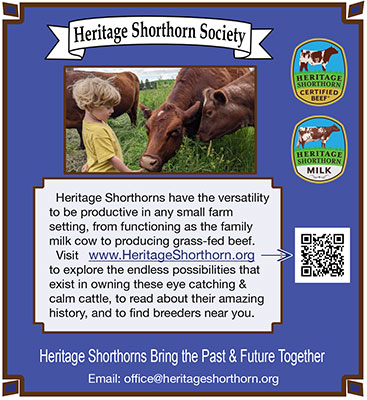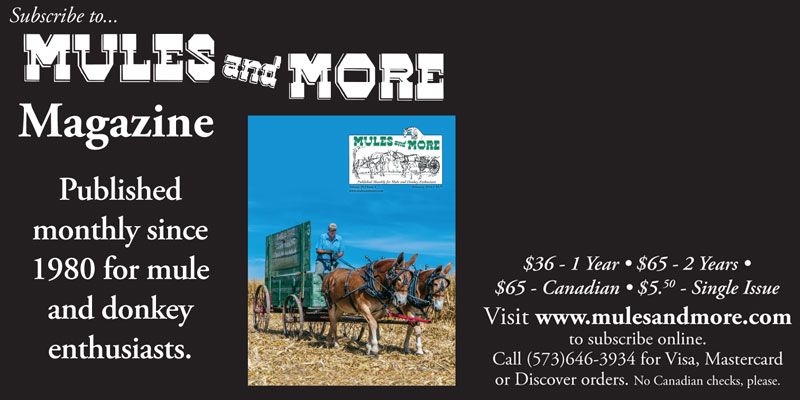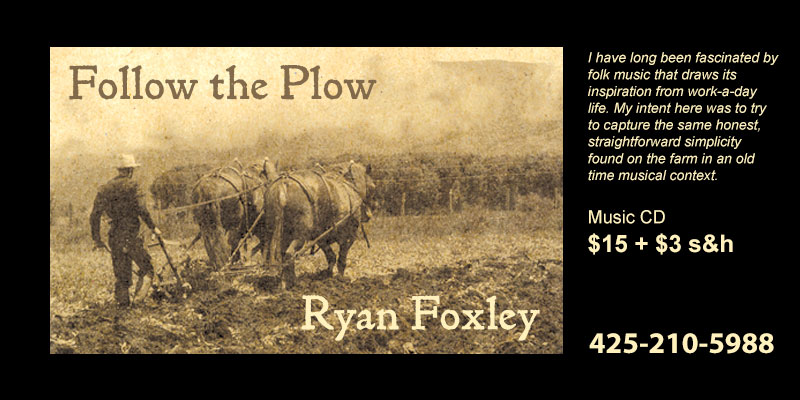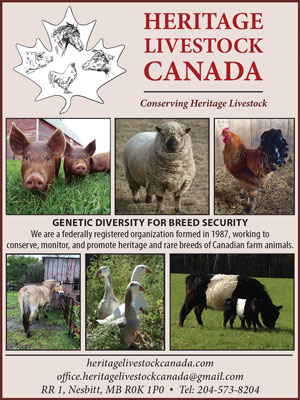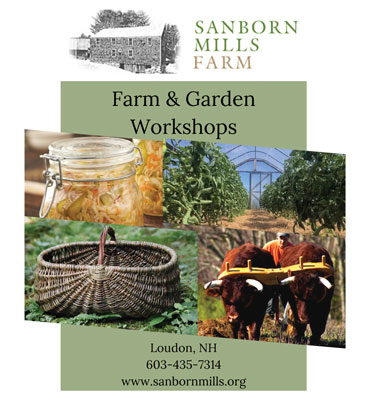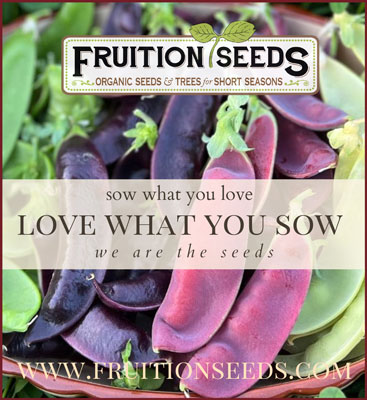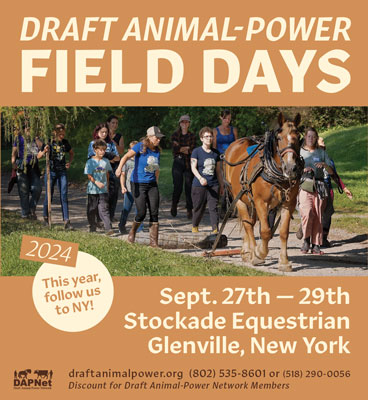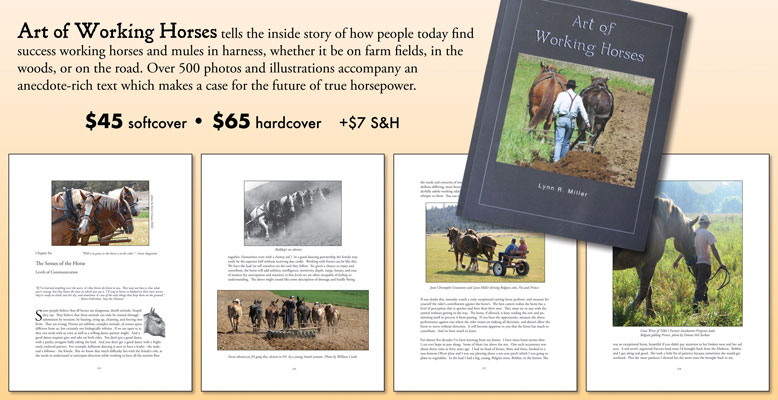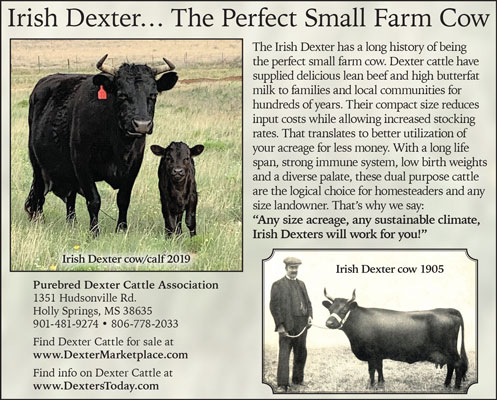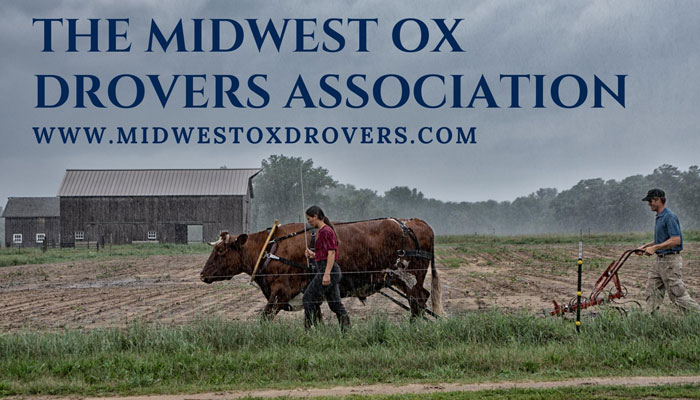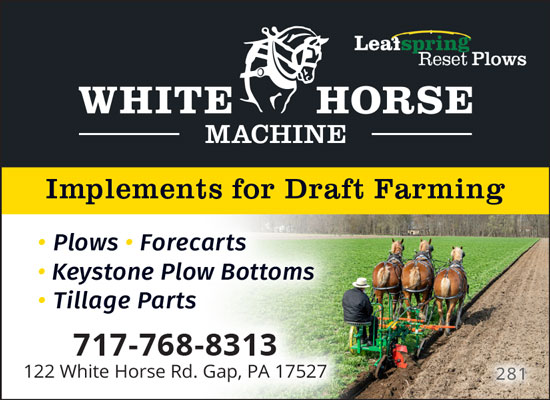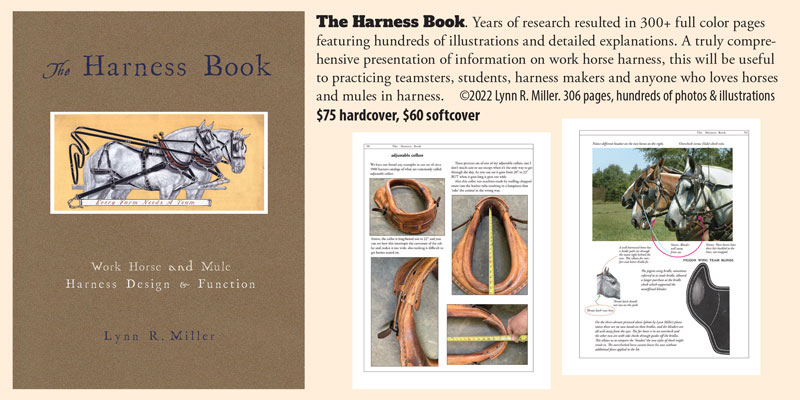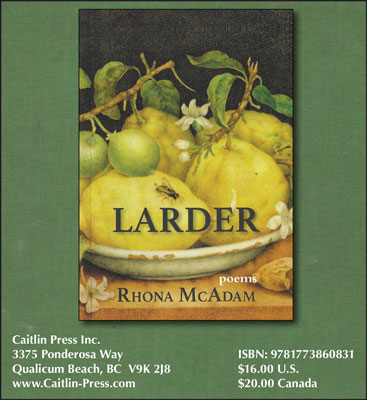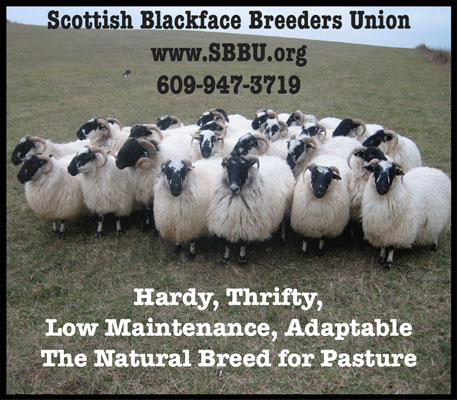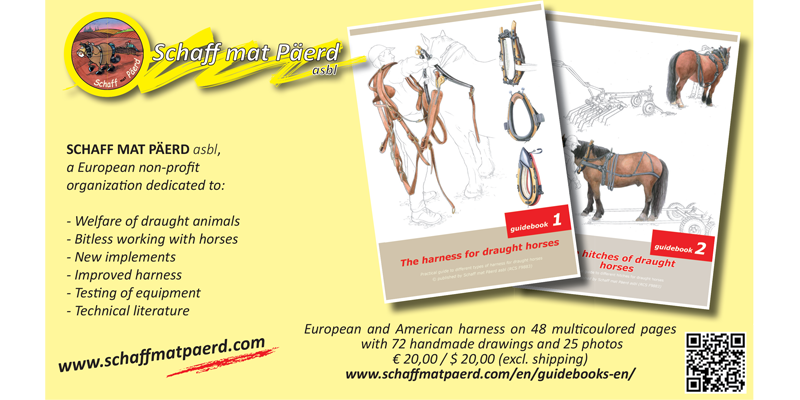MONDAY
April 15, 2024
Ground Driven PTOs
One of the ways tractors both gained and maintained their appeal is from the wider range of machinery they can power with the PTOs they carry. This definitely gave them the advantage over draft power. But is it going to stay that way? It may not have to be on a small farm. During the horsepower road trip Khoke and I went on a couple years ago, we got to see some examples from folks who knew which side of the fence they were on. We saw a number of machines that were reworked and reinvented to make them run off the power source of their choice, namely horsepower.
TUESDAY
April 16, 2024
Headlight Grape
One of the things long desired by Southern fruit growers is a good table grape, sufficiently resistant to leaf and fruit diseases to endure the climatic conditions of their section. Many varieties have been brought forward from time to time; but of the older sorts especially adapted to table use not one, either foreign or native, has yet proved successful over any large area. One of the most promising recent introductions in this field is the Headlight, which was originated by Prof. T.V. Munson, of Denison, TX, in 1895.
WEDNESDAY
April 17, 2024
John Deere Model HH Spreader
Check the adjustments on your spreader and make sure they are in proper operating condition. Hitch your team to the empty spreader to limber it up and see that it is working properly before loading. If you will turn the beaters over by hand before starting to the field, the spreader will start easier and will prevent throwing out a large bunch of manure when starting.
THURSDAY
April 18, 2024
Lost Apples
The mindboggling agricultural plant and animal diversity, at the beginning of the twentieth century, should have been a treasure trove which mankind worked tirelessy to maintain. Such has not been the case. Alas, much has been lost, perhaps forever. Here are images and information on a handful of apple varieties from a valuable hundred year old text in our library.
FRIDAY
April 19, 2024
American Milking Devons and the Flack Family Farm
On a sunny early September day I met Doug Flack at his biodynamic and organic farm, just South of Enosburg Falls. Doug is an American Milking Devon breeder with some of the best uddered and well behaved animals I have seen in the breed. The animals are beautifully integrated into his small and diversified farm. His system of management seems to bring out the best in the animals and his enthusiasm for Devon cattle is contagious.
Are you getting the SFJ Home & Shop Companion?
The Home & Shop Companion is a free weekly email newsletter. It features stories, handy hints, recipes, news, offers, projects, distractions and other stuff we think you’ll find interesting. The entire series is archived here on the website and is free to all to browse: Home & Shop Companion Archive.
SIGN ME UP FOR THE HOME & SHOP COMPANION!
Explore Small Farmer's Journal: Equipment & Facilities
Profit by Better Threshing
This is from a brochure for the J.I. Case Threshing Machine Co. It has an excellent diagram of a threshing machine.
International Manure Spreaders (No. 1 and No. 2)
In order to get the best results both as to spreading manure evenly on the ground and to avoid heavy draft, the machine should be loaded at the forward end of the box first, and continue loading toward the rear until the cylinder is reached, being careful not to force the manure against the cylinder. This will allow the cylinder to start easily and the machine will draw much easier when loaded in this manner, the manure being more easily separated.
Farm Drum #27: Case 22 x 36 Threshing Machine
Friend and Auctioneer Dennis Turmon has an upcoming auction featuring a Case Threshing machine, and we couldn’t wait when he invited us to take a look. On a blustery Central Oregon day (sorry about the wind noise), Lynn & Dennis take us on a guided tour of the Case 22×36 Thresher.
Setting Up A Walking Plow
Here is a peek into the pages of Horsedrawn Plows and Plowing, written by SFJ editor and publisher Lynn R. Miller.
Illusive Herd of Threshasaurus Sighted
The Threshasaurus’s large size and curious nature may appear antagonistic, but they are mostly curious and largely non-threatening. Be careful when approaching, however, as they do have sharp teeth and many fast moving, exposed pulleys.
Planet Jr. Two-Horse Equipment
This information on Planet Jr. two horse equipment is from an old booklet which had been shared with us by Dave McCoy, a horse-logger from our parts: “Think of the saving made in cultivating perfectly two rows of potatoes, beans, corn or any crop planted in rows not over 44 inches apart, at a single passage. This means double work at a single cost, for the arrangement of the fourteen teeth is such that all the ground is well tilled and no open furrows are left next to the row, while one man attends easily to the work, with one team.”
Walking Plow
It’s hard to say why I chose a walking plow. My neighbor tells me they make them with wheels. They make chairs with wheels, too, but I’m not anxious to own one. Land size figured in, and price, and working order, and things said by farmers old and young. I didn’t flip a coin, but I might as well. I decided to start with a walking plow, and at the Small Farmers’ Gathering in Missouri in 1987, I found just the one; a John Deere 16-inch plow with good wood handles.
The Farm & Bakery Wagon
The first step was to decide on an appropriate chassis, or “running gear.” Eventually I chose to go with the real deal, a wooden-wheeled gear with leaf springs rather than pneumatic tires. Wooden wheels last forever with care and are functional and look the part. I bought an antique delivery wagon that had been left outdoors as an ornament. I was able to reuse some of the wheels and wooden parts of the running gear.
Building a Shoeing Stock, with an Update
Following publication of the original article on building a shoeing stock, I received numerous phone calls and letters from people across North America about getting a set of plans or drawings for the stock. I never had any printed plans or drawings when I built the shoeing stock, only sketches and ideas. I recently took the time and made a couple of drawings of the shoeing stock and included dimensions of the major components.
Center Cut Mower
The prospect of clipping pastures and cutting hay with the mower was satisfying, but I wondered how I might take advantage of a sickle mower in my primary crop of grapes. The problem is, my grape rows are about 9 feet apart, and the haymower is well over 10 feet wide. I decided to reexamine the past, as many of us do in our unconventional agricultural pursuits. I set off with the task of reversing the bar and guards to lay across the front path of the machine’s wheels.
Use the Right Planter Plates
All suggestions on the chart are for an average check drop of 3 kernels per hill with the variable drop set at three; or for drilling, the plate cell accommodates one kernel. To obtain a wide range of drilling distances, plates having the same size cell but having more or less cells per plate are often required, in addition to different planter adjustments.
Resurrection of a Western Dump Wagon
No sooner had we arrived in Great Falls, and Nick put forth a wonderful idea – Grant-Kohrs needs a horse drawn dump wagon. Betty knows where a couple of them are, and we could restore one for the Ranch’s use. Grant-Kohrs will pay for any materials needed and we would donate the labor. Nick had brought his flatbed trailer and we could leave in the morning for Brady, MT, to meet Harvey & Marcia Hollandsworth. Out across the wheat lands of Montana we did go. Betty and Marcia had worked together for years with the 4-H clubs and Harvey, like Nick and me, is short on only one thing – TIME! We are never bored and we have way too many projects to complete in a normal lifetime. A good condition to have! One of the wagons was made by the Russell Co. and the other was made by the Western Wheeled Scraper Works located in Aurora, IL.
Parlin & Orendorff Jewel Surface Cultivator
For surface cultivation the Gopher gangs have become quite popular, and in response to a general demand we have brought out the Jewel Surface Cultivator. The frame is of the same general construction as the regular Jewel with such changes as are necessary to attach the Gopher gangs, and in place of the pendulum movement, ratchet levers are used for raising the gangs. The foot-rests are adjustable, giving the operator an easy position and enabling him to do the most effective work.
Antique Equipment
Case Steam Tractor • Case Wooden Body Thresher • Massey-Harris Hay Loader • P & O Cultivator
Gies’ New-Made Hayloader
I was sitting on a 5 gallon bucket staring at the hayloader. I had a significant amount of time and money invested. My wife, the great motivating influence in my life, walked up and asked what I was thinking. I was thinking about dropping the whole project and I told her so. She told me that it had better work since I had spent so much money and time on it already. She doesn’t talk that way very often so I figured I had better come up with a solution.
Sweet Potato House
Last issue Ida Livingston talked about her discovery that sweet potatoes were exceptional feed for laying hens, year round. That led me to wondering how we might have the tubers for 12 months, so I looked up this building plan in our archives. With what chicken feed costs and what eggs WILL be worth in the coming years, a building such as this might be better than the cat’s meow.
John Deere Side Delivery Rakes
The John Deere Side Delivery Rake is set up as illustrated in the following pages. The darkened portions in the progressive illustrations show clearly the parts to be assembled and attached in proper order. Where the instructions or the connecting points are numbered follow closely the order in which they are numbered. Arrows are also used to point out important adjustments or parts that need special attention in setting up.
The Shopping List
This event is about showcasing new innovations in animal power but it is also a place to show-case ingenuity, inventiveness, plus tools, parts and pieces. From my many visits to this stellar annual event I have long known that folks travel here specifically to shop for equipment. So I thought to gather some pictures and info from that perspective. If I had the money and were shopping, what items would I want to put on my shopping list? I found some I needed, some I wanted, some I felt drawn to and a few without justification.
McCormick Deering/International: No. 7 versus No. 9
McCormick Deering/International’s first enclosed gear model was the No. 7, an extremely successful and highly popular mower of excellent design.
Nova Scotian Head Yoke
Because the animals push the load with their foreheads, there are several factors that affect draft. One of the most important is that the steers need to have short thick necks so that there is less tendency for the neck to curve or sway. This is why the preferred breeds for oxen in Nova Scotia are Hereford crosses, most often Hereford x Durham. The angle of draft is controlled by a pole, or wooden tug, that is attached to the yoke with two adjustable lengths of chain. The angle with which the tug meets the yoke can be adjusted so that when the steers push into the load, the draft neither forces their heads up too high nor down too low. Like all draft animals, they need a constant angle of draft that allows them to lift the load.
Ask a Teamster: Securing the Neckyoke
With most common types of team harness the neckyoke is an essential component of both the steering and hold back systems. In addition to holding the tongue up, neckyokes permit the horses to pull/push the end of the tongue with them as they move right or left, thus steering the vehicle or implement. As part of the hold back system neckyokes function by transferring the – slowing, stopping, backing, and holding back the load – actions of the horses to the tongue, and thus to the vehicle or equipment.
McCormick-Deering Primrose Cream Separator
When the milk has been poured into the supply can, and machine has attained its speed, the faucet should be fully opened. The milk will then flow through the regulating cover, down the feed tube and into the bowl, where separation of cream from the milk takes place. The skim milk passes from bowl to skim-milk cover and out into receiver; the cream enters cream cover, thence to receiver.
How to Build a Spinning Wheel
When we first sheared our sheep, we were at a loss as to what to do with the wool. Unwilling to throw it away, we shoved it into a pillowcase under the bed until winter brought time for projects. We looked into buying a spinning wheel, but the prices were far outside of our range. I had read that the first “Saxony Wheel” was made in the 1500s by a woodcarver who undoubtedly had fewer resources than I do, even with my simple shop and few tools. Then, he had to invent the thing from the ground up, shooting in the dark, while I could look and copy from spinning wheels in the neighborhood. I am somewhat mechanically inclined, about average as a handyman, and I was able to come up with a design that is simple to build, simple and dependable to use, and takes up almost no space in the house.
Factory Colors
At Small Farmer’s Journal we are frequently asked what the original colors were for various and sundry makes of horse drawn farm equipment. Some folks who restore these implements are purists and wish to correctly duplicate the coloration. While the colors for something like McCormick-Deering mowers were constantly changing and quite complex, we for years felt comfortable in the certainty that John Deere was always their own unchanging yellow and green. We were surprised then to discover from original sales brochures that they frequently used a third color, red-orange, on their tools. Here are two examples which we hope reproduce sufficiently well for you to get good information.
Ask A Teamster: Perfect Hitching Tension
In my experience, determining how tight, or loose, to hook the traces when hitching a team can be a bit challenging for beginners. This is because a number of interdependent dynamics and variables between the pulling system and the holdback system must be considered, and because it’s ultimately a judgment call rather than a simple measurement or clear cut rule.
Basil Scarberry’s Homemade Two-Way Plow
Mr. Scarberry had come from West Virginia to share, in the purest sense of the word, his implement ideas. His implements were not for sale, they were there for people to see, measure, ask about and enjoy. He wanted it to belong to everyone; he wanted it to be seen and known as his gift to us.
Horse Powered Snow Scoop
The scoop has two steel sides about 5 feet apart sitting on steel runners made out of heavy 2 X 2 angle iron, there is a blade that is lowered and raised by use of a foot release which allows the weight of the blade to lower it and then lock in the down position and the forward motion of the horses to raise it and lock it in the up position. This is accomplished by a clever pivoting action where the tongue attaches to the snow scoop.
Laying Out Fields for Plowing
There are four general plans, or methods of plowing fields. These are: (1) to plow from one side of a field to the other; (2) to plow around the field; (3) to plow a field in lands; and (4) to start the plowing in the center of the field.
Handling Feed the Easy Way
Feed-handling jobs which used to take hours of time and plenty of back bending are now done in a matter of minutes with little more than a lift of the hand, by means of chutes, augers, power lifts, portable elevators, movable hoppers, overhead catwalks, traveling feed boxes and other ideas similar to the examples shown on these pages. These are the days when feed handling had been powered-up to the point where 100 bushels of shelled corn can be loaded out of a bin into a truck in five minutes, and here’s how it’s done.
Chuckwagon Focus of New Display
Chuckwagons have become quite rare, although they can occasionally be found on large ranches, but most often in a parade or museum, such as the one owned by Vern Krinke of Auburn, Washington. Krinke, a ruggedly handsome man in his 70s, is a chuckwagon cook of extraordinary talent who prepares sumptuous dinners from his 80-130 year old Studebaker chuckwagon that he restored after finding it in a junk pile on a ranch southeast of Saratoga, Wyoming.
Frick Steel Thresher
Every thresherman purchasing a new machine wants to do just a little better work than his neighbor. It is therefore important that he should operate his machine properly in every particular. He should make every adjustment necessary to do good work. The cylinder should be run at the proper speed and the concaves adjusted to meet the existing conditions and kind of grain, so that all the heads will be threshed clean of every kernel. The more perfect the threshing, at the cylinder, the nearer the approach to perfect separation.
John Deere No. 12-A Straight-Through Combine
It is only natural for the owner of a new combine to want to try his machine as early as possible. This results in most new combines being started in the field before the crop is ready for combining. As soon as a binder is seen in the neighbor’s field, the urge to start becomes uncontrollable. When grain is ready for binding, it is not ready for straight combining.
A Pony-Powered Garden Cart
One of the challenges I constantly face using draft ponies is finding appropriately sized equipment. Mya is a Shetland-Welsh cross, standing at 11.2 hands. Most manure spreaders are big and heavy and require a team of horses. I needed something small and light and preferably wheeled to minimize impact to the land. My husband and I looked around our budding small farm for something light, wheeled, cheap, and available, and we quickly noticed our Vermont-style garden cart.
Bobsled Building Plans
Here are two, old-style, heavy-duty, bobsled building plans featuring the sort of sleds you might have found in New England and the Maritime Provinces of Canada. (In fact you might get lucky and find them still.) These are designed to haul cord wood on the sled frame.
Fjordworks: Plowing the Market Garden Part 1
In a horse-powered market garden in the 1- to 10-acre range the moldboard plow can still serve us very well as one valuable component within a whole tool kit of tillage methods. In the market garden the plow is used principally to turn in crop residue or cover crops with the intention of preparing the ground to sow new seeds. In these instances, the plow is often the most effective tool the horse-powered farmer has on hand for beginning the process of creating a fine seed bed.
An Insider’s Guide to Blacksmithing
I am the smith, and I have come a long way since I nearly shattered my first knife. Through thorough application of being thrifty, not overworking myself, and pushing through hard times, I have become a blacksmith for the better. Blacksmithing is an incredible art of ancient origin. In these modern times, it has become almost lost, carried on by a select few. These select few can be strengthened by those who consider pursuing a noble interest and can carry on blacksmithing lore for another generation.
Portable A-Frame
These portable A-frames can be used for lots of lifting projects. Decades ago, when I was horselogging on the coast I used something similar to this to load my short logger truck. Great homemade tool.
I & J Mfg: Innovators of Horsedrawn Implements
I & J Mfg. started importing ESM sickle bar components which dramatically improved the basic hay mowers’ performance. Smoother operation meant less draft requirement which in turn led to a revolutionary new self-contained ground-drive mower made available in 2011. This was to be the first such successful design since the mid-twentieth century. I & J Mfg. offers kits to retrofit other mowers with their excellent sickle bar system.
The Harness for Draught Horses: a Review
Readers of this publication will recognize the names of Albano Moscardo and Paul Schmit as authors of an important, multi-year series of scientific articles pertaining to animal-powered agriculture. It was, perhaps, only logical that their important work would find its way to formal publication beyond periodicals and website. We are pleased to announce that the first book of their multiple volume effort, Guidebook 1: The Harness for Draught Horses, has been published and is available to the public. The dramatic and appropriate clarity of this presentation, superbly enhanced by the illustrations of Albano, makes of it a most useful work of scholarship and applicability.
Horse Progress Days 2019 – Weathering Change
This is my third Horse Progress Days, including 2008 in Mount Hope, Ohio, and 2016 in Howe, Indiana. We could note a few trends in a nutshell — how tall draft horses are back, and miniature horses (which are not stocky ponies but perfectly proportioned horses more pleasing to the eye) are being bred to ever more refined and useful conformations. How the current style for most big draft horses is to have their tails severely docked, though the tails of miniature horses are left long. By way of footwear these days there seem to be few of the brightly colored Crocs for the whole family, but gray and black Crocs aplenty. One huge change over three years ago is that here were as many bicycles, with and without baskets and trailers (and some with batteries and motors), as the dark square family buggies drawn by identical lean brown trotters and pacers. Bicyclers include both youthful and older farmers, using this healthy and efficient form of transportation to get around.
The “Eddy No. 6” Corn Planter
The illustrations in this Catalog will clearly demonstrate the many desirable features of the “Eddy No. 6” Corn Planter – features that are exclusive and of vital importance to the corn grower who desires to plant his corn so that it is easily worked and will yield the greatest number of bushels per acre. The “Eddy No. 6” Corn Planter combines the Edge Selection as well as the Flat Selection. That is, the purchaser gets an Edge Drop as well as a Flat Drop equipment with every “Eddy No. 6” Corn Planter at no additional cost.
Combine Adjustments
Most of the grain losses from combine operation can be prevented if the grain is ripe enough when it is cut and if the machine is correctly adjusted. The machine should be adjusted for each field that is cut and adjusted several times each day for changing weather conditions. Good operation of the combine is difficult where there is a large proportion of weeds in the crop, but correct adjustment reduces the trouble. Grain loss may be at the following places: the grain platform (reel or cutter bar), the cylinder, the straw rack, and the cleaning shoe.
Sheppard Diesel 3
An advertisement for the Sheppard Diesel 3 farm tractor.
Affordable Sawmill – and Lumber
As we all know nowadays, costs are high on about everything. But ever so often someone finds a way to “get-around” some of these expenses. Such was the case for Bill Reeks when high winds broke, uprooted and damaged many trees on his forty-eight acres. Knowing many board feet of nice lumber lay within these logs if only there was an “affordable way” to make these many logs into good, accurate lumber, he decided to build himself a band sawmill out of the “left-overs” from many years on construction jobs.
The Milk & Human Kindness: Plans for an Old Style Wooden Stanchion Floor
The basic needs that we are addressing here are as follows: To create a sunny, airy (not drafty), dry, convenient, accessible place to bring in our cow or cows, with or without calves, to be comfortably and easily secured for milking and other purposes such as vet checks, AI breeding, etc. where both you and your cow feel secure and content. A place that is functional, clean, warm and inviting in every way.
Portable Poultry
An important feature of the range shelter described in this circular is that it is portable. Two men by inserting 2x4s through the holes located just below the roost supports and next to the center uprights can easily pick up and move it from one location to another. Frequent moving of the shelter prevents excessive accumulation of droppings in its vicinity which are a menace to the health of the birds. Better use will be made by the birds of the natural green feed produced on the range if the houses are moved often.
Snow Trail Groomer
Want to groom sled trails, freeze skid trails, or set cross-country ski trails? Here is a relatively inexpensive device that has numerous advantages over the conventional chain link fence, bedspring, log, tractor tire, etc. It is easy to construct, manhandle, and store. One of the major advantages over some other methods is that it allows the snow to stay on the trail rather than pushing it to the side. This action allows it to cover rough surfaces such as roots, rocks, and ruts.
LittleField Notes: Mower Notes
The horse drawn mowing machine is a marvel of engineering. Imagine a pair of horses turning the energy of their walking into a reciprocal cutting motion able to drop acres of forage at a time without ever burning a drop of fossil fuel. And then consider that the forage being cut will fuel the horses that will in turn cut next year’s crop. What a beautiful concept! Since I’ve been mowing some everyday I’ve had lots of time to think about the workings of these marvelous machines.




